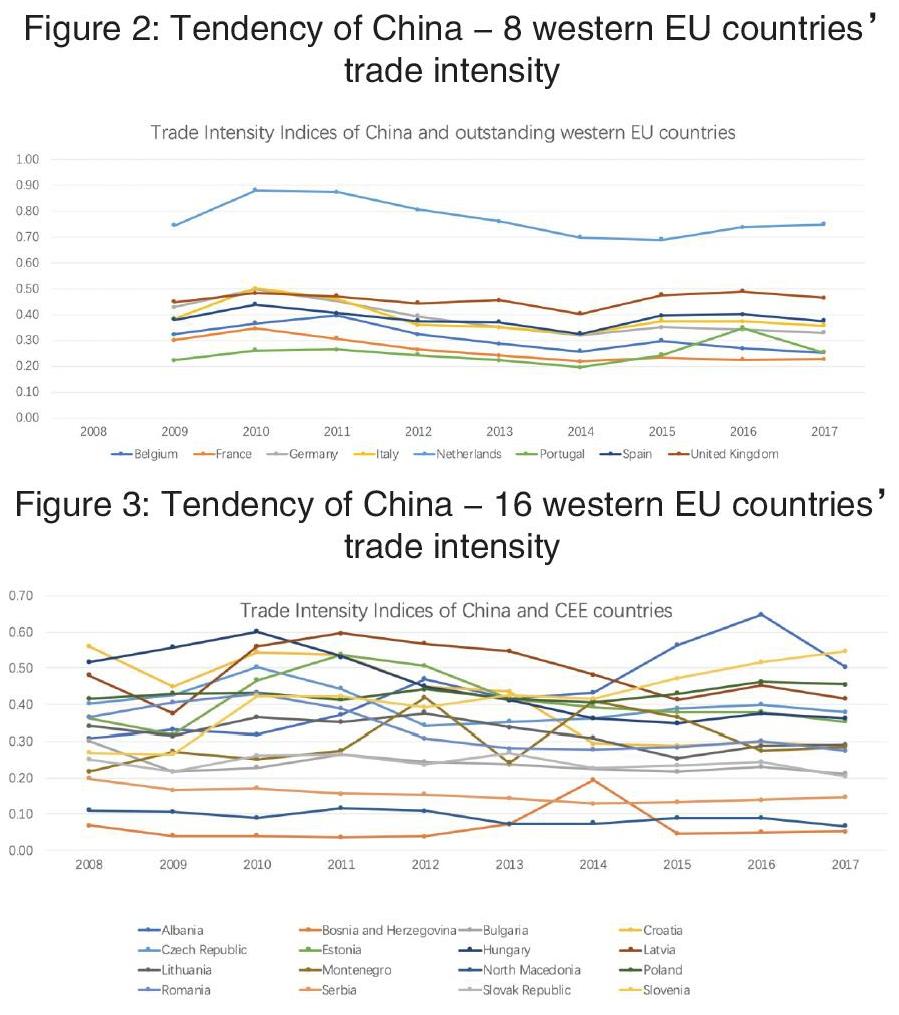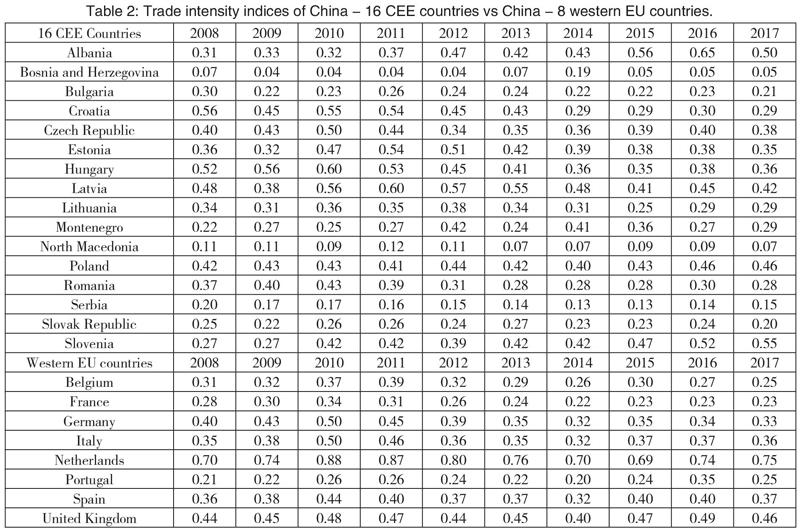Empirical analysis of the trade intensity between China and CEE countries
2020-10-21ZhaoWei
Zhao Wei



Abstract Compared with the European Union (EU), Central and Eastern European Region (CEE) has been the outstanding experimental field in Chinas ‘Belt and Road Initiative. Besides being proactive in bridging with China, CEE has the larger share of land and population on the European continent too. However, the trade between CEE and China only matches up with a fragment of its Western counterparty. This paper examines such disproportionated trade relationships, with a focus on trade intensity.
As pointed out by ?gnes Szunomár: “CEE countries have increasingly perceived China as a country which could bring economic benefits to the region through developing trade relations, growing inflows of Chinese investment and recently also through infrastructure projects carried out by Chinese companies and financed from Chinese loans.” [?gnes Szunomár, 2020: 35] The trade volume between China and CEE countries has a significant growth in the past ten years. However, based on the plastic trade data we can find that comparing to the trade volume of China and the whole EU countries, despite the driven force from politics, the bilateral trade relations between China and CEE countries remains relatively low [Agnes Szunomar, 2020: 35], which merely accounts for 10 percentages of the whole amount in whole EU countries. Based on what the author mentioned above, it is no wonder that we can suggest that some factors hinder the bilateral trade between China and CEE countries.
In order to explore the exact trade relation of China with CEE countries and give a more precise description about the trade situation of these two regions, the author collected the relevant trade data of 16 CEE countries and 8 outstanding western European countries from 2008 to 2018. Based on these data, a trade intensity index is employed in this paper. Based on the Equation (1), trade intensity between China and certain CEE countries can be expressed as the share of Chinas export value in a certain CEE country in Chinas total export divided by the share of interested CEE countrys total import in the world total import. The equation is presented as follow:
Where,
is the trade value China exports to certain CEE country
is the total export of China
ICEE is the total import of the destination CEE countries
IWorld is the total import of world
By calculating the collected data, we can get the Table 2 which can be transformed into Figure 3 and Figure 4.
According to Figure 2 we can find that the tendency by year of TI indices between China and 8 outstanding EU countries are generally consistent, which makes sense because of the similarity of political factors and economic factors in these 8 outstanding western EU countries. In contrast, in terms of the 16 CEE countries, despite their relative economic similarity, their TI index tendencies are not only distinct among different countries, but also sharply fluctuant within single country. The TI of single CEE county fluctuates sharply by years instinctively suggests that normal economic factors and market mechanism have a weaker impact on bilateral trade between China and CEE countries comparing to its impact on China and western European countries. Because the economic factors and market mechanism relation generally cannot fluctuate sharply year by year, which means, comparing to political factors, economic factors should be more stable. Economic factors can be changed by time within a country, however, it is not rationale that the economic impact factors has been changing in each single year. Furthermore, considering the similarity of CEE countries, the tendency of their TI with China should also be similar, as what showed in the bilateral trade between China and those Western EU countries. In contrast, political factors are characteristic of unstable. For example, the changes of the policy makers in CEE countries may change their official attitude on China thereby change their bilateral trade relations with China, and it is vice-verse from Chinas perspective. Therefore, it is not unexpected that we can raise the plausibility that comparing to western EU countries, non-economic factors have more impact on the bilateral trade of China – CEE.
Reference
[1]SZUNOM?R, ?. (2020, p35). Empty shell no more: Chinas growing footprint in Central and Eastern Europe. ASSOCIATION FOR INTERNATIONAL AFFAIRS.
[2]https://chinaobservers.eu/wp-content/uploads/2020/04/CHOICE_Empty-shell-no-more.pdf. (April 2020) Accessed: 2020. 04. 07
